On a single carriage
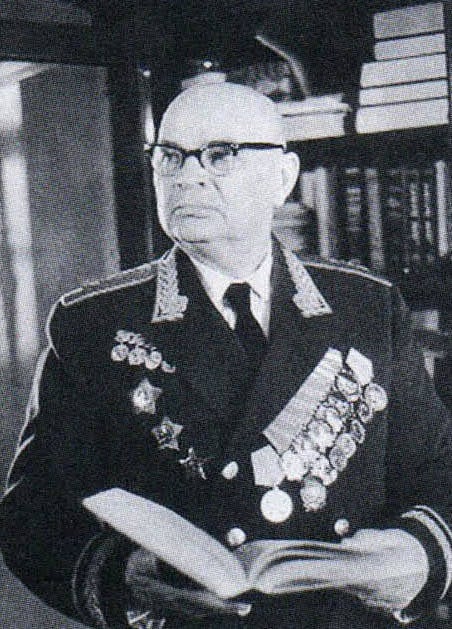
The pinnacle of this grab's unification and interchangeability was the development of so-called "duplexes" and "triplexes." Simply put, the creation of a family of artillery guns with one gun carriage and two, three or more barrels of different caliber and ballistics. Thanks to the preserved reports of the CRI-58 for 1948 and 1949, it is possible to quite reliably describe the scope and results of work carried out by the Grabians on such complexes in the post-war period.
One of these complexes is the so-called “high-capacity triplex”, the development of which began in 1944. It is a complex of heavy artillery systems, consisting of an X-NUMX-mm cannon C-180-mm howitzer C-23,210-23-mm C-1,280 mortars -II. V23 was included in its structure also 1947-mm gun howitzer C-203,4-IV, however the complex continued to be called "triplex". The carriage for all systems was one - wheel, field type, with sliding beds. The slope of the grooves in all systems was provided for the same, the recoil brake — hydraulic, and the grip — hydropneumatic. The position of this artillery system was established by the tractor and the forces of calculation. Preliminary position preparation was required only on weak soils. Vozka system was provided inseparable.
Triplex was designed to perform the following combat missions:
a) Destruction of durable defensive long-term structures, reinforced concrete and armor type, as well as other large and tactically important engineering structures both at the front edge of the defense and in depth.
b) Conduct combat with large-caliber, well-protected enemy artillery.
c) Shelling of enemy rear areas located at long distances.
During 1948, prototypes of the systems and two gun carriages were assembled, factory and field tests were carried out, and the systems were upgraded according to the results of the tests. In addition, a completely new design of the “7002” type of exploded sight was developed for high-powered tools, later on it was designated C-85. I would like to give an excerpt from the test results of this sight:
“The sight has clear advantages over existing sight designs. As a result of comparative ground tests of “7002” sights with the “ML-20” sight, the first showed the best results:
a) according to the accuracy of the aiming of the instrument by the angle of elevation 4 times;
b) according to the accuracy of the tooling over the horizon 2 times;
c) reduction of dead moves of sight mechanisms by 6;
d) the complete absence of irreversible longitudinal and transverse pitching of the sight.
From the report of the landfill and the conclusion of Artkom GAU VS according to the results of field tests, it follows that the prototype of the sight passed the test, showed clear advantages over the standard sight, gave the best 4 {shooting accuracy results and measurements were convenient to maintain ... ". It remains only to add that this sight, almost without any changes, is still in service with domestic heavy guns with a hovering type. Thus, we find superfluous confirmation of the fact that the staff of the TsNII-58 team was engaged in precisely the complex development of artillery systems, and moreover very successfully. But this amount of work was far from being limited to sights. In the same 1948, special concrete-breaking projectiles for C-23 and C-23-I are being developed. Here is an excerpt from the report on the inclusion of 180-mm projectile in C-23 ammunition: “The depth of penetration into the vertical reinforced concrete wall of unlimited thickness when fired at a distance of 5,2 km at a meeting angle 30 'is 1,5 + 1,6 m, which is approximately 3 times more for regular 152,4 mm shells, drawing 2-07117 (weight 56 kg) and 203-mm shells drawing 2-04831 (weight 100 kg) when shooting at full charges at the same distance ... The test results are satisfactory. GNIAP GAU VS. recommends drawing concrete shell No. 42-1802 to the C-180 X-gun. »
The weight of the new projectile was 87,5 kg. Obviously, in the field of designing new projectiles, Grabin, too, was very successful. In fact, this is not surprising, because the Central Research Institute-58 carried out extensive research work even in the field of aerodynamics and had its own vertical supersonic wind tunnel. But back to the "triplex". For 1949, prototypes (gun carriages No. 1 and No. 2) of the triplex systems were set apart sights with new upper machines and guidance mechanisms, an additional frontal coulter support was introduced to increase stability when shooting from weak ground. Improvement of the front end has been improved, the 1300 x 380 off-road wheels have been manufactured and delivered, and other modifications have been made to improve the performance of the systems. A not-tested howitzer gun was later excluded from the complex. Modified systems received an additional index "A". A special barrel wagon was developed.
Also conducted factory tests, samples handed over to the customer. Later, some modifications were started, in particular, related to the transition to a cardin loading - a new customer requirement. Such a requirement is best described by historian AB Shirokorad, calling him nothing other than: “periodic attack of a cardiac card at the GAU”. So to say, another current, sometimes lobbied in the top leadership of artillery. B1953 of the Central Research Institute-58 developed the 210-mm howitzer C-33 and 280-mm mortars C-43 of capsus charging, having a common carriage with the 180-mm C-23 gun.
But because of the collapse of the Russian artillery in Khrushchev in 1955, only C-23 was adopted for service, with only eight units already produced. Several times they took part in parades on Red Square. Foreign experts first identified in their reports the Grabin cannon as “203-mm cannon-howitzer M-1955”.
In 1967, during the “six-day” war, the Israelis occupied the Golan Heights and installed American 175-mm self-propelled M107 guns with a firing range over 30 km. In the future, for a long time, Israel shelled the positions and rear of the Syrian troops, as well as Arab oil facilities in the adjacent territories. Syria, like Egypt at that time, was in the zone of interests of the USSR, but it was not possible to help the Arab allies, because we did not have high-precision missiles. Because of this, the release of the C-23 was resumed. For 1971, 12 guns were manufactured for Syria, 10 of which are still in service with the Syrian army. Some C-23 was also supplied to Egypt. The Soviet shipments of the 203-howitzer cannon somewhat leveled off the situation in the positional Arab-Israeli war, which was a mutual exchange of artillery strikes. But in October 1973, during the so-called “Doomsday War”, the Israelis managed to capture several C-23, which were subjected to detailed research. Including the real caliber of Soviet guns was determined. To get the reader a complete picture of the combat power of the complex, its tactical and technical characteristics are presented.
1 table. Tactical and technical characteristics of the "high power triplex"
№ p / p | Parameter name | Dimension | C-23A | C-23A-I | C-23A-II | C-23A-1V |
1 | Caliber | mm | 180 | 210 | 280 | 203,4 |
2 | starting speed | m / s | 860 | 625 | 360 | 805 |
3 | Projectile weight | kg | 88 | 133 | 246 | 100 |
4 | The longest range | м | 30000 | 20450 | 10600 | 26500 |
5 | Muzzle energy | tm | 3390 | 2650 | 1625 | 3310 |
6 | Movement speed | km / h | to 35 | to 35 | to 35 | to 35 |
7 | Elevation angles | degree | -2 + 50 | -2 + 70 | -2 + 70 | -2 + 70 |
8 | Horizontal guidance angles | degree | + 20 | ±20 | ±20 | ±20 |
9 | System weight (combat) | kg | 21060 | 20600 | 19980 | 20770 |
10 | System weight (hiking) | kg | 21550 | 21100 | 20450 | 21250 |
11 | Time of transition from traveling to combat and back | minutes | 30 | 30 | 30 | 30 |
In parallel with the work related to the C-23 family, Grabin with the team led the development of several dozens of other systems, including the so-called “big duplex”, which is a combination of several systems on a single carriage. "Duplex" is a complex of heavy artillery systems, consisting of X-NUMX-mm cannon C-210 and X-NUMX-mm howitzer C-72. In 305, the X-NUMX-mm howitzer C-73 was also included in it, however, unlike the case with “high-capacity triplex”, a separate gun carriage identical to the duplex car was supposed for the gun-howitzer. Partly because of this fact, and partly because of the desire to avoid confusion with triplex systems of "high power", the developed complex, as in the first case, did not change its name and remained in the documentation "duplex". Its characteristics are given in table. 1948.
2 table. Tactical and technical characteristics of the "big duplex"
The carriage for C-72 and C-73 was single, wheeled, close to field type, with sliding beds. The slope of the grooves of all systems was also made the same, the recoil brake was hydraulic, and the inactive one was hydropneumatic. Charging of all systems is capsized, mechanized: the shot was raised to the ramming line and ramming was carried out from the electric drive. The power supply of the units was carried out from the power station mounted on the re-equipment crane. The retooling of the system was carried out with a special 20 t truck crane. The C-72 and C-73 systems were transported separately, each system had its own set of specially designed carts.
The tasks of the duplex included shooting at the deep rear of the enemy and the destruction of powerful wooden and earth defenses and reinforced concrete horizontal floors. In 1948, an advance design was developed, a preliminary design of the components and assemblies of the system was implemented, and a technical design was developed under the code G-0914. During 1949, the institute made improvements to the technical design according to the remarks of the Art Committee of GAU, made working drawings for the systems and wagons. The drawings were presented to the customer and put into production for the manufacture of prototypes. During 1953 and 1954 Factory tests of the C-73 howitzer were carried out and relevant modifications were made. In 1956 and 1957 shooting was carried out. Based on a report about them, the howitzer showed excellent results, not causing any complaints either in accuracy or accuracy of fire. However, the head of the landfill, Major General Bulba, was greatly disturbed by the fact that the re-equipment of the system was taking place using a crane. As a result, he wrote in a report that the swinging part of the howitzer should be applied to the 271 object type artillery missile. Major General, in fact, put an end to the whole Grabin project. Despite the external bulkiness, the “duplex” guns, submerged sodium wagons, along with a special crane had very decent mobility. Arrangement of the developed systems for self-propelled specified
Type caused only the illusion of increased mobility. The 271 landing craft was a super-heavy machine, unable to pass over ordinary bridges or under power lines that do not fit into the streets of small towns. The installation mounted on it, also could not be transported on a railway platform, which was a prerequisite for the transport of military equipment over long distances. Because of all this, the 271 object (with the 406-mm SM-54 cannon) was not accepted for service, although it participated in the parades on Red Square several times, making an indelible impression on foreign specialists.
Even if we omit all of the above, the question arises, how necessary is the mobility of the tracked course for an artillery gun in a combat situation? According to sound reasoning, it is not very necessary for high-powered guns, since this class of artillery systems is designed to wage a positional war. Putting them on the tracked self-propelled device causes a significant complication of the product, therefore, entails a rise in price and a decrease in the reliability of the gun. The gain in mobility appears only in the situation of a threat or the onset of a direct collision, that is, direct open combat, where large-caliber artillery is almost useless. So the findings of the commission led to a very dubious result. Grabin, of course, had to do the development of giant artillery installations, but, of course, it was all in vain. None of the tools of special power, developed in the course of work on the "big duplex", was never adopted.
As one more example of the “one-stop” Grabinsky systems can be the so-called “small duplex”, developed in parallel with the products described above. It was a complex of artillery systems consisting of X-NUMX-mm cannon C-130 and 69-mm cannon C-152-I, and was intended to arm corps artillery. The main combat missions for him were the fight against enemy artillery, the suppression of long-range targets, the destruction of strong concrete and armor structures, as well as the fight against enemy mechanized combat weapons. Both systems had a single carriage. The differences in systems consisted only in free pipes, muzzle brakes and recoil spindle brakes. Characteristics of "small duplex" are given in table. 69.
3 table. Tactical and technical characteristics of the "small duplex"
№ p / p | Name | Dimension | C-69 | C-69-I |
1 | Caliber | mm | 130 | 152,4 |
2 | starting speed | m / s | 930 | 760 |
3 | Projectile weight | kg | 33,4 | 43,5 |
4 | The longest range | |||
at φ = 45 | м | 27270 | 20000 | |
5 | Muzzle energy | tm | 1473 | 1281 |
6 | full speed | |||
movement | km / h | 45 | 45 | |
7 | Vertical guidance angles | town | -3 ° * + 45 ° | -3 ° + + 45 ° |
8 | Horizontal guidance angles | town | 25 ° ± | 25 ° ± |
9 | Weight of the system in the stowed position (actual) | kg | 8643 | 8589 |
10 | The weight of the system in the combat position (actual) | kg | 7830 | 7798 |
In 1948, prototypes were collected and debugged, factory tests were carried out, and prototypes were handed over to the customer to conduct field tests. At the end of 1948 and the beginning of 1949, field tests were carried out. They were held on a competitive basis, and the guns of the Grabinsky “duplex” were slightly inferior to their competitors, the “duplex” guns developed in the Design Bureau of the Perm plant No. 172. Therefore, in 1949, there were improvements and factory tests of the prototype based on the results of the tests and new ground tests of the upgraded samples. However, based on the results of repeated tests, it was decided to discontinue work on the complex, since the elimination of all deficiencies "will lead to a significant change in the nodes of the guns and, in essence, to the creation of a new model." On the one hand, this is a completely legitimate decision with respect to tools that are somewhat inferior to competitive models. But, on the other hand, it should be noted that the Grabin team could easily cope with a similar amount of improvements, and during the years of design work, Vasily Gavrilovich not only managed to refine, but also significantly improve the product in a very short time, while significantly outperforming the competitors. As an example, the well-known pre-war three-inch F-22 and F-22USV. In the case of the SPV, Grabin managed to outperform the Kirov competitors, which are ahead of his design bureau by more than a year. What can be said here? Probably, only that "once for once is not necessary" ...
So, the Central Research Institute-58 under the leadership of Grabin devoted a lot of time and energy to the development of duplex and triplex complexes. Artillery complexes with several interchangeable barrels of various calibers and ballistics repeatedly increased the degree of versatility of heavy artillery. They, of course, could take a worthy place in the military armament and more than once prove the relevance of the barreled artillery. But the post-war years were marked not only by the restoration of the country and the return of her life to a peaceful course. There was a time and extra means in order not to dwell on the structures that confirmed their reliability, but to do a “free” search in the field of kartuz charging or self-propelled “monsters”. And it didn’t seem so terrible to waste time and money. However, external threats did not disappear, but only changed, but at the same time the strategy of the proposed warfare could not change. Rocket technology appeared on the horizon, foreshadowing undeservedly premature oblivion of artillery ...
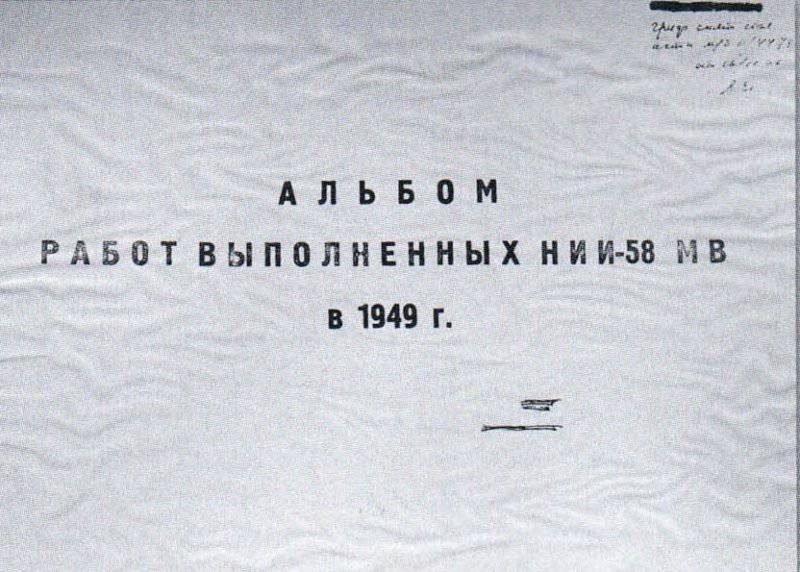
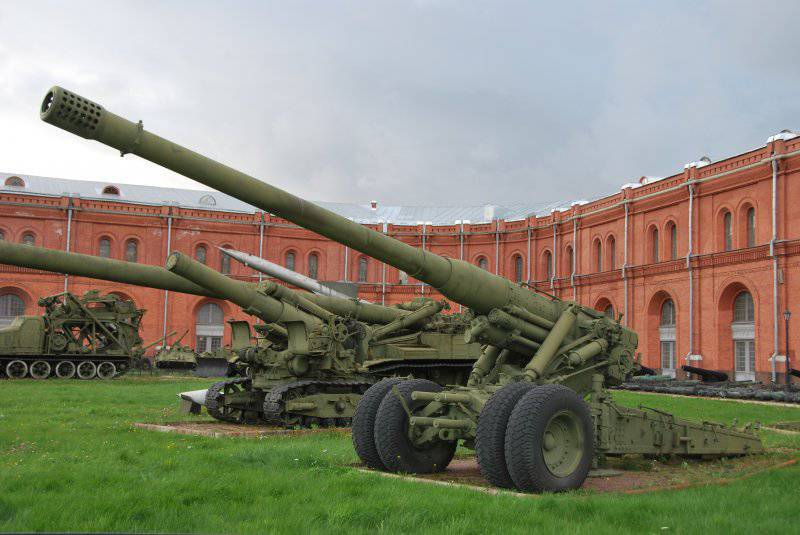
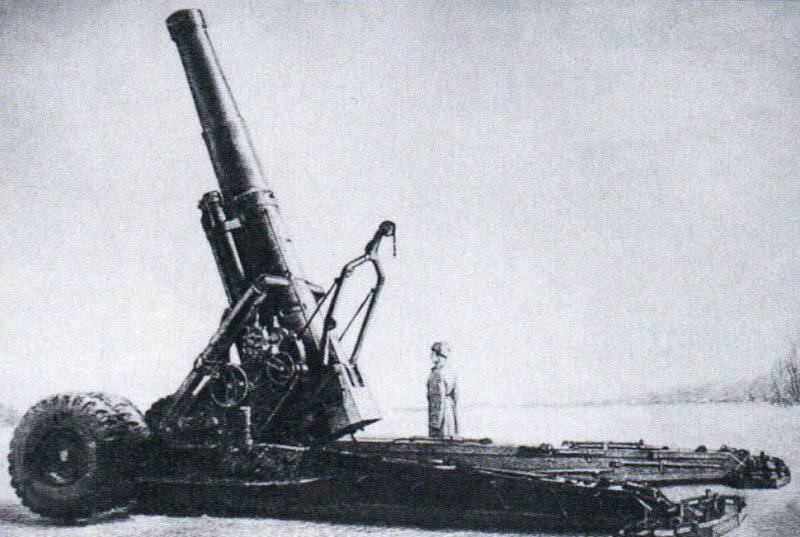
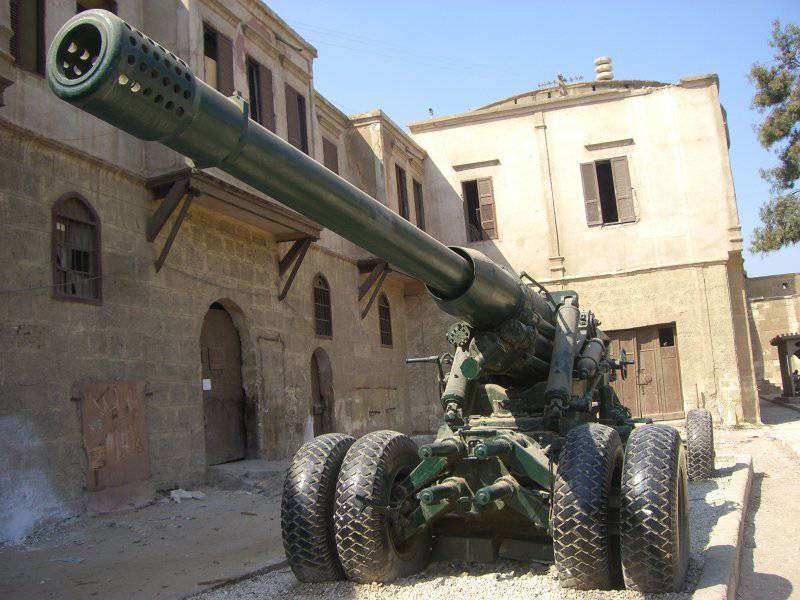
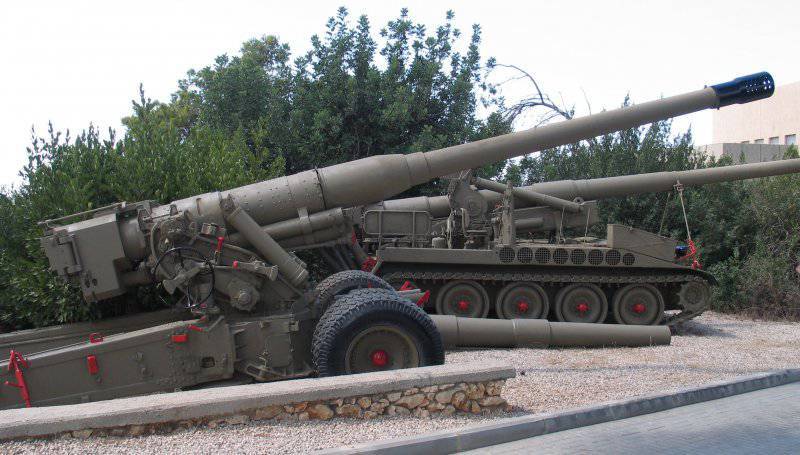
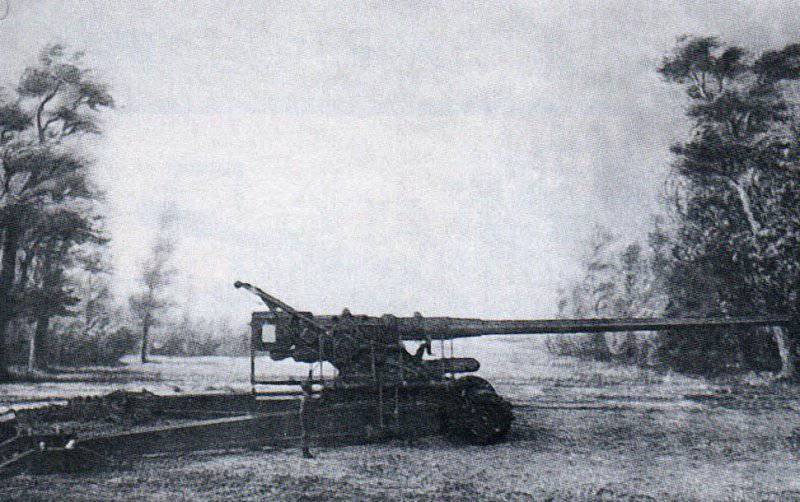
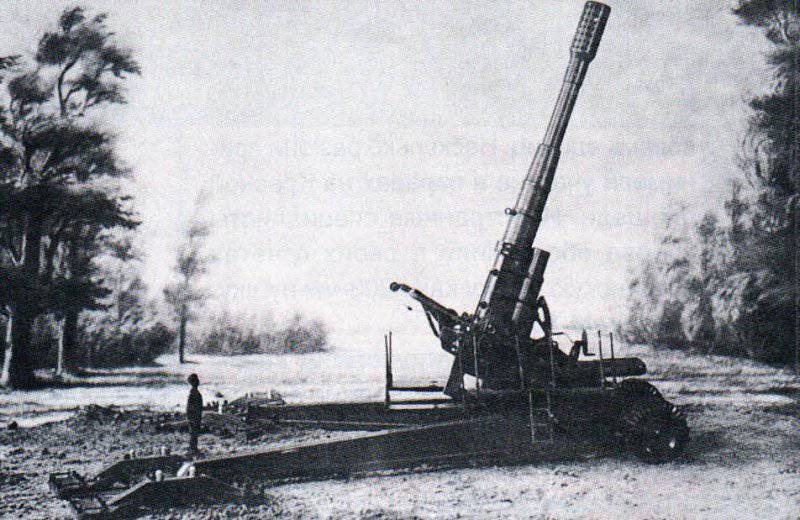
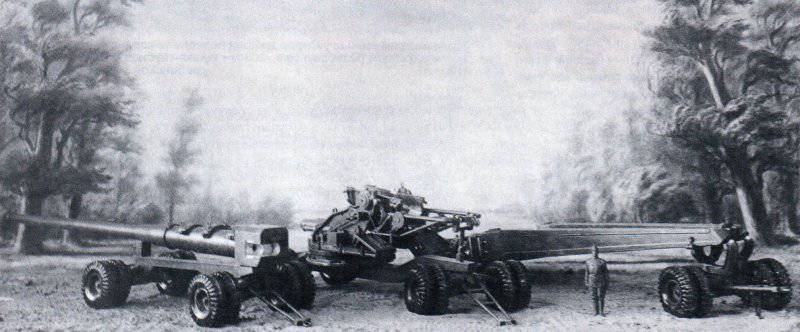
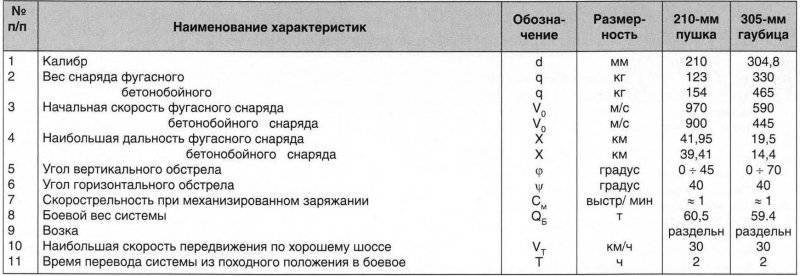
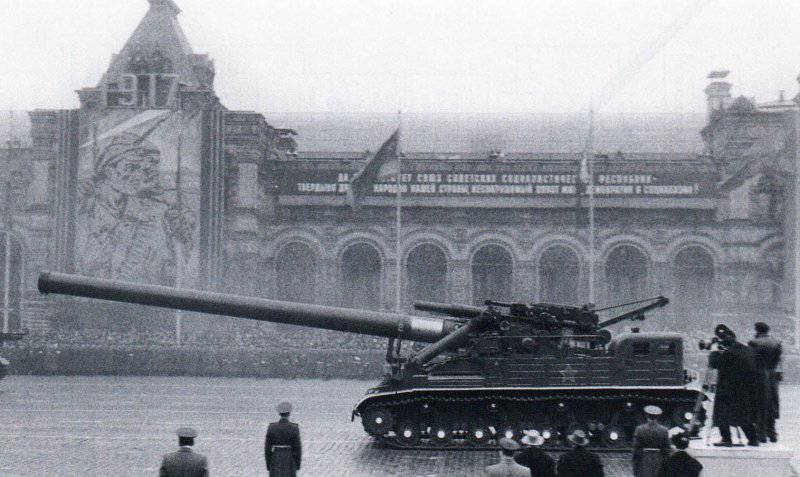
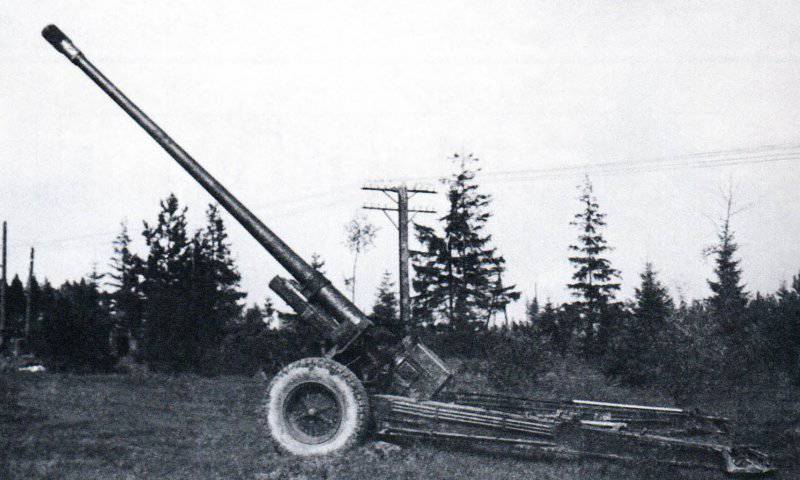
Information